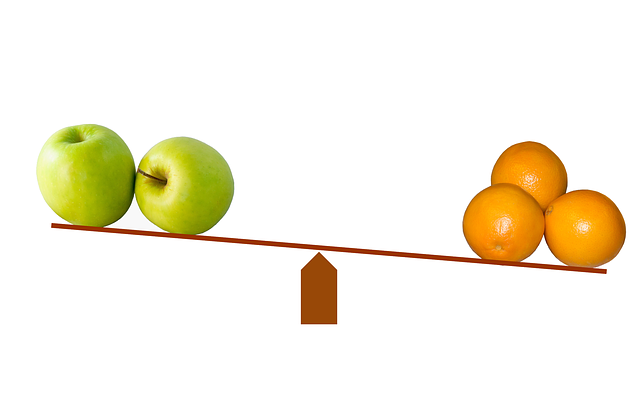PO financing and invoice factoring are distinct cash flow management tools. PO financing leverages buyer promises for immediate working capital, while factoring involves selling invoices at a discount for rapid funding. Factoring offers speed, flexibility, and convenience but higher fees, ideal for small to medium enterprises (SMEs). Understanding these differences helps businesses choose the optimal method based on cash flow needs and strategic goals: maintain control over accounts receivable and relationships (PO) vs. quick capital release with reduced direct control (factoring). Compare pros and cons carefully to make an informed decision aligned with financial objectives, especially for businesses with unique cash flow patterns or limited supplier relationships.
In today’s dynamic business landscape, efficient capital management is crucial for growth. This article explores two financial solutions: Purchase Order (PO) financing and Invoice Factoring. We provide a comprehensive overview of each, delving into their mechanisms, benefits, and drawbacks. By comparing PO financing and factoring side-by-side, we equip businesses with a decision framework to choose the best solution based on their unique needs. Discover how these strategies can optimize cash flow, enhance operational agility, and drive success.
- Understanding PO Financing: A Comprehensive Overview
- How Invoice Factoring Works and Its Benefits
- Comparing the Two: Key Differences and Similarities
- Pros and Cons of PO Financing for Businesses
- Advantages and Drawbacks of Invoice Factoring
- Choosing Between PO Financing and Factoring: A Decision Framework
Understanding PO Financing: A Comprehensive Overview

PO financing and invoice factoring are both powerful business solutions, each with unique benefits and use cases. To grasp PO financing, one must comprehend it as a process where a buyer (in this context, typically a large corporation or government entity) issues a Purchase Order (PO) to a seller for goods or services. The seller then uses this PO as collateral to secure funding from financial institutions or specialized PO finance companies. This provides them with immediate working capital, enabling businesses to meet their operational needs and capitalize on opportunities without waiting for traditional billing and payment cycles.
When comparing PO financing and factoring, it’s crucial to note the differences. Factoring involves selling accounts receivable (invoices) to a third-party factor, who assumes the responsibility of collecting payments from the buyer. This offers businesses quick cash flow but may come with higher costs and fees. In contrast, PO financing leverages the Purchase Order as security, allowing sellers to access funds without directly assigning their invoices. This method maintains more control over the sales process while providing similar financial benefits, making it a strategic choice for companies looking to manage cash flow efficiently while preserving autonomy in their billing practices.
How Invoice Factoring Works and Its Benefits

Invoice factoring is a financial solution that involves selling outstanding invoices at a discount to a third-party funder, known as a factor. This process provides businesses with immediate cash flow, allowing them to access working capital quickly and easily. When a business issues an invoice to a customer, the factor purchases that invoice at a discounted rate, typically around 80-95% of its face value. The remaining balance is paid to the business once the invoice is settled by the customer. This method offers several advantages over traditional financing methods like PO (Purchase Order) financing.
While PO financing requires businesses to wait for customers to pay invoices before accessing funds, factoring provides immediate funding. Factoring also eliminates the need for extensive credit checks and complex application processes, making it a more accessible option for small and medium-sized enterprises. Moreover, factoring can improve cash flow management, enabling businesses to cover operational expenses, invest in growth opportunities, or manage unexpected financial burdens more effectively. Comparing PO financing and factoring, the latter offers greater speed, flexibility, and convenience for businesses seeking rapid access to capital.
Comparing the Two: Key Differences and Similarities

When considering business solutions, understanding the nuances between PO financing and invoice factoring is crucial. These two funding methods serve different purposes, offering unique advantages for businesses based on their cash flow needs and strategic goals.
PO financing involves a buyer (the entity receiving goods or services) issuing a Purchase Order to the seller, promising payment at a later date. This provides sellers with immediate funding, allowing them to meet financial obligations without waiting for customers to pay invoices directly. In contrast, invoice factoring involves selling outstanding invoices to a third-party factor, who then handles collections and advances a percentage of the invoice amount to the business immediately. While PO financing offers direct funding to sellers, it may come with longer payment terms and potential credit risk from buyers. Factoring provides quicker access to cash flow but involves fees and potentially less control over collections processes.
Pros and Cons of PO Financing for Businesses

PO financing, also known as purchase order financing, is a powerful tool for businesses seeking to unlock cash flow and fund their operations. This method involves using a purchase order (PO) from a customer as collateral to secure funding before the goods or services are delivered. The main advantage lies in its ability to provide immediate working capital, enabling businesses to cover costs, manage cash flow, and even fund growth strategies. It’s particularly beneficial for companies with slow-paying customers or those dealing with large orders that require significant resources.
However, there are considerations when comparing PO financing to other solutions like invoice factoring. One con is that it may not be suitable for all businesses, especially smaller operations with limited credit history, as lenders often require a solid financial background. Additionally, the funding process can take time, aligning with the order fulfillment timeline, which might not align with every business’s needs. Compared to factoring, PO financing keeps the accounts receivable within the company, offering more control over collections and customer relations. Yet, it demands careful management of inventory and orders to ensure successful execution.
Advantages and Drawbacks of Invoice Factoring

Invoice factoring offers businesses a quick cash flow boost by selling their outstanding invoices at a discount to a third-party factor. This can be particularly beneficial for companies with uneven cash flow patterns, as it provides immediate funding. Factoring is especially useful for small and medium-sized enterprises (SMEs) looking for alternative financing options, as it doesn’t require collateral or long-term commitments. It’s also a flexible solution, allowing businesses to maintain control over their accounts receivable and customer relationships.
However, factoring does come with certain drawbacks. The primary downside is the cost, as factors typically charge fees and interest rates that can be higher than traditional financing options. These costs can add up, especially for companies with high invoice volumes. Additionally, some businesses may prefer to retain full ownership of their accounts receivable for strategic reasons or to maintain a close relationship with clients. When comparing PO (Purchase Order) financing against factoring, the former often offers more favorable terms and lower rates, but it’s not always suitable for all businesses, particularly those with inconsistent cash flow or lacking strong supplier relationships.
Choosing Between PO Financing and Factoring: A Decision Framework

When deciding between PO financing and invoice factoring, businesses should consider their specific cash flow needs and strategic objectives. PO financing involves extending credit to a buyer based on their Purchase Order (PO), allowing businesses to receive payments when goods or services are delivered. This option is ideal for companies looking to maintain control over their accounts receivable and build long-term relationships with clients.
On the other hand, factoring offers immediate funding by selling outstanding invoices to a third-party factor. This method provides quick access to cash flow but may involve higher costs and less direct control over the collections process. A strategic analysis comparing PO financing’s strategic advantages of fostering client relationships versus factoring’s speed in releasing capital can help businesses make an informed choice tailored to their financial goals.






